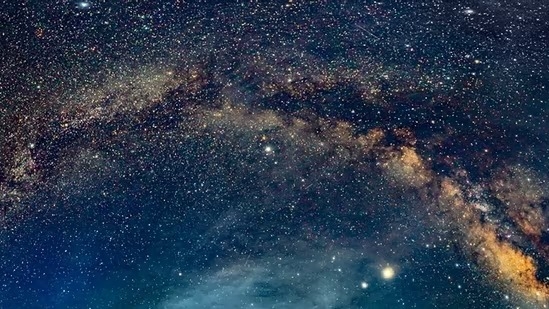Scientists discover Shiva Shakti in universe! Two 'oldest' building blocks of the Milky Way Galaxy
Shakti and Shiva are comprised of stars with similar chemical compositions that formed 12-13 billion years ago, the researchers said. Each of the structures has a mass about 10 million times greater than our sun.
Total Views |
Astronomers have identified two ancient streams of stars - named after the Hindu deities Shiva Shakti- that appear to be among the Milky Way's earliest building blocks, offering new insight into how our galaxy came together long ago.

These structures, found using observations from the European Space Agency's Gaia space telescope, may be relics of two distinct galaxies that merged roughly 12 billion years ago with the Milky Way's primordial pieces during the galaxy's infancy, the scientists said.
Shakti and Shiva are comprised of stars with similar chemical compositions that formed 12-13 billion years ago, the researchers said. Each of the structures has a mass about 10 million times greater than our sun.
In Hinduism, the union between Shiva and Shakti gave rise to the cosmos. Identifying the Shakti and Shiva structures has helped to bring the Milky Way's turbulent earliest stages into focus.
"Broadly, our study addresses a very fundamental question of modern astrophysics: how do galaxies form in our universe?" said astronomer Khyati Malhan of the Max Planck Institute for Astronomy in Germany, lead author of the research published this week in the Astrophysical Journal.
The Milky Way is a large spiral-shaped galaxy populated by hundreds of billions of stars whose disk measures approximately 100,000 light years in diameter. A light year is the distance light travels in a year, 5.9 trillion miles (9.5 trillion km). Stars, gas and dust extend from the galactic center in lengthy spiraling arms, with our sun residing on one of those.
"Specifically, our study potentially provides an understanding of the Milky Way's very initial stages of formation by identifying two star structures that coalesced very early on, perhaps the last event from the proto-Milky Way before disk formation commenced," Malhan said.
Gaia, launched in 2013, is assembling the largest and most precise three-dimensional map of the Milky Way, measuring the positions, distances and motions of stars. This data helped the researchers to detect the presence of Shakti and Shiva through properties shared by their stars.
The stars that make up Shiva and Shakti differ in composition from most of the galaxy's other stars.
They are called "metal poor" because they possess lesser amounts of heavier elements - iron, carbon, oxygen and others. These heavier elements were first forged inside the universe's earliest populations of stars and then blasted into space when those stars exploded at the end of their life cycles.
"Ideally, we want to trace the formation and evolution of the Milky Way starting from the beginning of it until the present day - like playing a 13 billion-years-long movie. But this is difficult, especially when we try to study and unravel the very early phases of our galaxy, say about 11-12 billion years ago," Malhan said.

